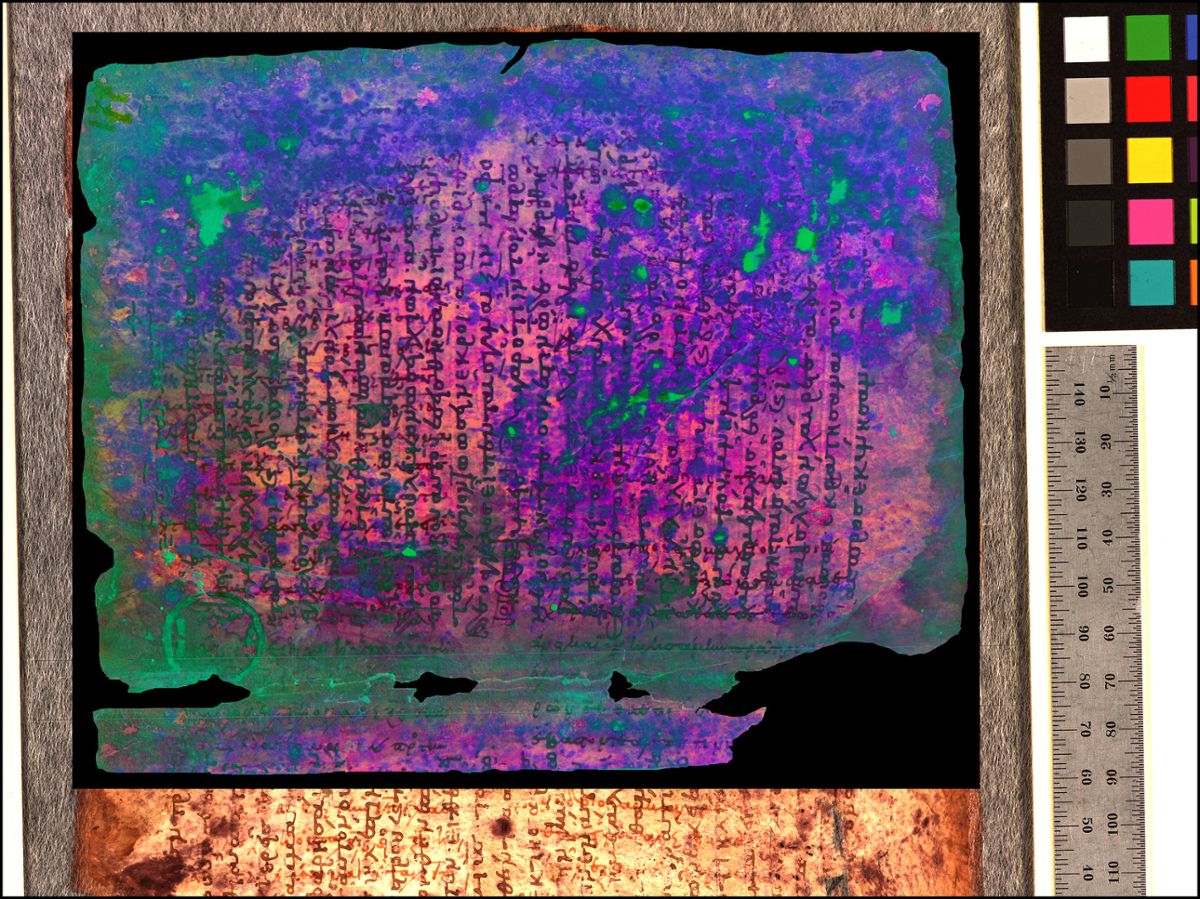If you look at ancient manuscripts, you may notice that beneath the text, there is often a faint outline of other words that have been erased and written over. Thanks to a technology known as multispectral imaging and the science of fluorescence, scholars are able to read these hidden texts and are making fascinating discoveries.
Fluorescence refers to a phenomenon that occurs when energetic, short-wavelength light like ultraviolet light shines on certain materials like parchment. The light’s photons hit the electrons on the outer shell of the object’s atoms, knocking the electrons away, causing the object to emit energy and glow. However, some materials, like iron, absorb ultraviolet light.
When ultraviolet light hits a manuscript, the ink, which has iron in it, absorbs the light, making any ink, even that which has been erased, faded, or written over, suddenly appear much darker. By taking a series of pictures under different wavelengths of light, scientists can register which wavelengths make each layer of text appear the clearest. This allows them to filter out any unnecessary light and render images of manuscripts where only the undertext is visible.
The process of creating these multispectral images is incredibly difficult and requires collaboration from physicists, computer scientists, and humanities scholars. The results, however, can be stunning. Combining the effects of these different types of lighting allows scholars to uncover entire texts that would otherwise be lost to us, such as the Archimedes Palimpsest where three otherwise lost documents by the famous Greek mathematician had been written over by a copy of a common Greek prayer book.










